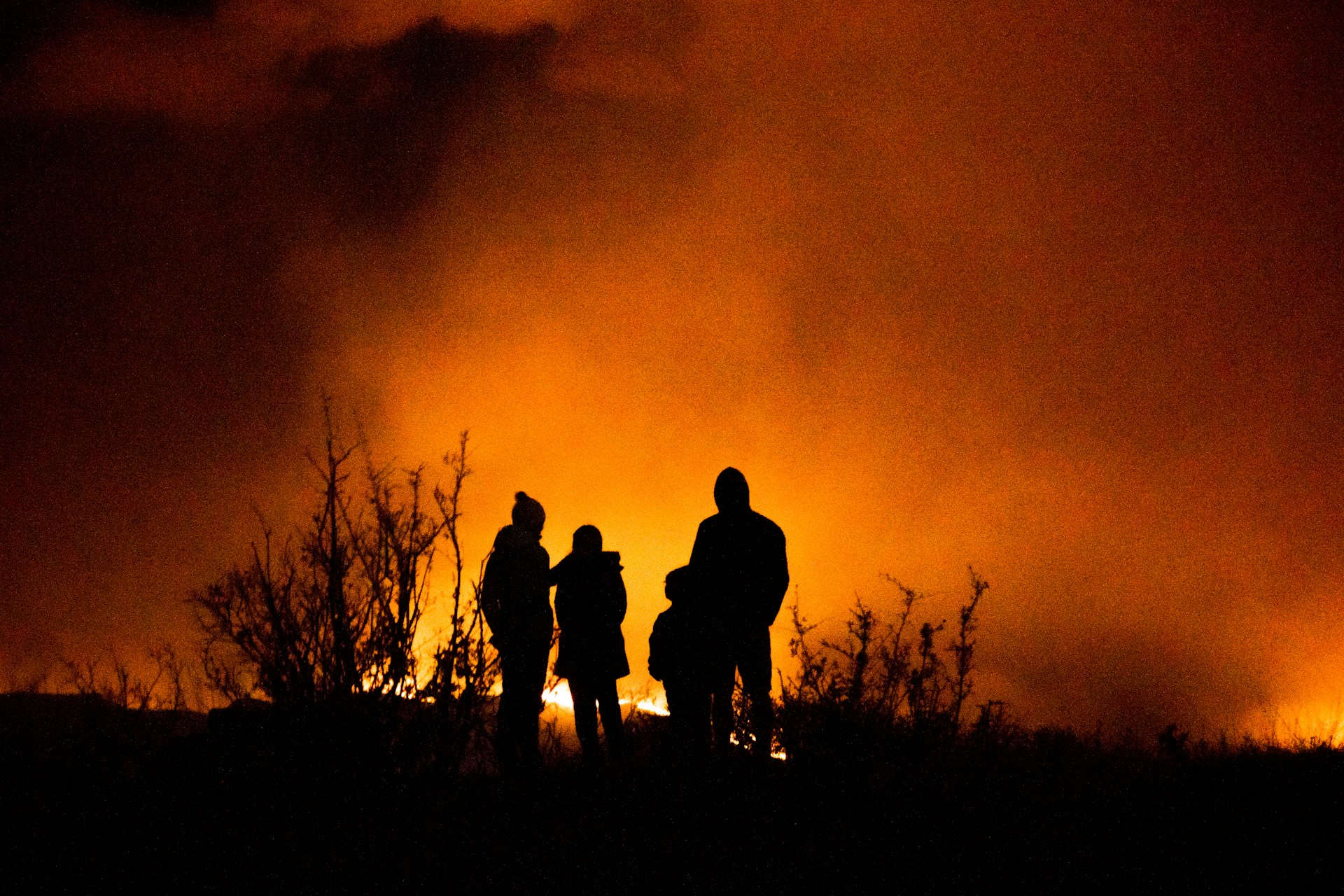Preparedness
Master Self-Reliance: Expert Tips for Unpredictable Emergencies

When it comes to self-reliance and preparedness, the ability to adapt quickly and effectively is crucial. In an ever-changing world, where disasters and emergencies can strike without warning, having a robust plan and the right skills can make all the difference. Let’s explore some expert tips and advice on how to maintain self-reliance and preparedness in various scenarios.
Water is a fundamental resource, yet many people overlook the importance of having an immediate plan if the taps suddenly stop running. While long-term water storage is important, you also need to consider what to do if you have no warning and no backup plan. In the aftermath of natural disasters, entire communities can be left without access to clean water. Prioritizing a strategy for immediate water needs is essential.
Food security is another critical aspect of preparedness. The reality of food shortages and high prices is already upon us. The United States Department of Agriculture has reported, “Egg prices have surged due to a bird flu outbreak.” This highlights the need to take control of your food supply, ensuring you have enough to sustain your family during uncertain times.
Disasters often strike with little to no notice, emphasizing the need for a 24-hour evacuation plan. Whether it’s a wildfire, civil unrest, or an approaching hurricane, sometimes you have less than a day to act. Having a well-thought-out evacuation strategy can help you escape disaster with no time to spare.
In the realm of self-reliance, the ability to create survival tools from everyday items can be invaluable. When resources are limited, knowing how to transform something as simple as a #10 can into essential gear can be a lifesaver. Adaptability and creativity are key traits for those who prioritize preparedness.
The recent egg crisis, driven by a bird flu outbreak, has demonstrated how quickly our food supply can be disrupted. Empty shelves and soaring prices have become common, leaving many to wonder if their favorite protein source will be next. This situation underscores the importance of being prepared for sudden shortages.
The threat of natural disasters is ever-present, as illustrated by the historic earthquakes that once shook America’s heartland. Imagine waking up to a world drastically altered, with the ground split open and rivers flowing in reverse. Such events remind us of the need for mental preparedness and resilience in the face of crisis situations.
Urban dwellers face unique challenges when it comes to survival. With 83% of Americans living in cities, the potential for civil unrest or other urban emergencies is significant. Having a plan to navigate and survive in such environments is crucial for those living in densely populated areas.
The fragility of our food systems was exposed during the 2020 pandemic, with panic-buying and supply chain disruptions highlighting vulnerabilities. By 2021, millions were scrambling for basic necessities, reinforcing the need for individuals to be proactive in securing their food supplies.
In a world where technology might enable climate control, the possibility of weaponized weather raises new concerns. The idea that storms can be summoned or droughts induced may sound like science fiction, but it’s becoming a reality. Being aware and prepared for such possibilities is part of a comprehensive preparedness strategy.
Finally, history has shown us that black swan events—unpredictable occurrences with massive consequences—can shape the world. From pandemics to economic collapses, these events catch us off guard. Preparing for the unpredictable is an essential part of self-reliance, ensuring that you and your loved ones are ready to face whatever challenges may arise.
Let us know what you think, please share your thoughts in the comments below.

Preparedness
5 Things in Your Home That Can Help You Create a Safe Escape Plan

Not every dangerous moment involves a direct confrontation. Sometimes the real threat is confusion, panic, or not knowing what to grab when you need to react fast. Your home already has simple items that can help you stay oriented, stay calm, and get out safely if something goes wrong — whether it’s a break-in, a fire, or any unexpected emergency.
Here are five everyday things that can quietly strengthen your safety plan without feeling like “preparedness gear.”
1. A Pair of Shoes You Can Slip On Fast
This sounds almost too simple, but it’s one of the most overlooked safety tools in any house.
If you need to leave in a hurry — even just to get outside and call for help — you don’t want to waste time with laces or walk barefoot over broken glass, cold pavement, or debris. Keep a sturdy slip-on pair by your bed. It’s a small habit that can make a huge difference.
2. A Charged Old Phone
Even a disconnected phone can still call 911.
If you have an old smartphone in a drawer, charge it and leave it in your bedroom or a hidden spot. During an emergency, your main phone might be out of reach, dead, or taken. Having a backup gives you a second chance to call for help.
3. A Mini Flashlight on Your Nightstand
Power outages often happen at the worst moments. A small flashlight helps you see where you’re stepping, find your keys, or check on a noise without stumbling around in the dark. It also helps you avoid tripping hazards if you need to move quickly. Choose a compact LED one and keep it in the same spot every night.
4. A Loud Whistle
If you can’t shout, or your voice doesn’t carry far, a whistle can be your lifeline.
It cuts through walls, hallways, and even outdoor distance better than yelling. Whether you’re trying to alert a neighbor, scare off an intruder, or signal for help during a medical emergency, a whistle is one of the most underrated tools for personal safety.
5. A Written “Quick Escape Plan”
You don’t need blueprints — just a simple index card taped inside a drawer or next to your nightstand.
Write down:
• Your fastest exit routes
• Where your keys always stay
• Where your phone and flashlight stay
• A reminder to put on shoes
• Who to call first
In a panic, people forget steps. A small card keeps your mind focused and your actions clear.
Final Thought
Self-protection starts long before danger shows up. It’s not about preparing for a fight — it’s about preparing to move, think, and react in a way that keeps you safe.
Preparedness
5 Everyday Items in Your Home That Can Help You Protect Yourself

Most people don’t keep traditional self-defense tools around the house, but that doesn’t mean you’re helpless in an emergency. The truth is, you already own simple items that can give you precious seconds to get away, call 911, or draw attention. The key is knowing what works, what’s legal, and how to use these items only to defend yourself when you have no other choice.
Here are five practical household items that can help you stay safe during a threatening situation:
1. A Heavy-Duty Flashlight
A solid, metal flashlight is one of the best non-lethal tools you can keep within reach.
It serves two purposes:
• The bright beam can disorient someone long enough for you to escape.
• The sturdy body gives you something to hold if you need to keep distance between yourself and a threat.
Keep one by your bed and another near your front door.
2. A Loud Personal Alarm or Air Horn
Sometimes the strongest defense is noise. A personal alarm or small air horn can draw attention fast and frighten off an intruder. These devices are inexpensive, easy to use, and require no physical strength. They also alert neighbors that something is wrong, which can shorten response time dramatically.
3. A Strong Walking Cane
For older adults especially, a cane can be surprisingly effective for self-defense if absolutely needed. Its length helps you create distance, and its solid structure gives you a way to push someone back without having to get close. Even if you don’t use a cane daily, keeping one near your bedroom can be smart.
4. A Fire Extinguisher
Beyond its intended use, a fire extinguisher can help you defend yourself in two ways:
• The blast of spray can temporarily block vision and breathing, allowing you to escape.
• Its weight gives you something sturdy to hold while you retreat.
Plus, it’s already a safety essential for your home.
5. A Kitchen Pan or Lid
If you’re caught in the kitchen, a heavy pan or even a metal pot lid can create an effective barrier. A lid works like a small shield, helping you protect your face and upper body as you move away. A pan gives you something solid to hold between you and a threat.
A Final Note on Safety
Self-defense is always about getting away safely, not engaging in a fight. Your first options should always be:
• Avoid the situation
• Lock or barricade a door
• Call for help
• Get to safety
Use objects only as a last resort and only to give yourself time to escape.
Preparedness
5 Things You Should Always Carry During a Winter Storm

When a winter storm rolls in, life can shift fast. Roads freeze, power lines drop, and long errands suddenly become real risks. The good news is that a little preparation goes a long way, especially if you keep a few essential items within reach. These aren’t expensive or complicated. They’re simple, practical tools that can make all the difference when temperatures drop and help arrives slowly.
Below are five things worth carrying with you any time severe winter weather is in the forecast. Think of them as your personal insurance plan — small items that bring peace of mind in uncertain conditions.
1. A Fully Charged Portable Power Bank
If you’re stranded or delayed, your phone becomes your lifeline. It lets you call for help, follow weather alerts, and use GPS if you need to find your way. In cold weather, phone batteries drain much faster, so a reliable power bank is a must. Choose one that can charge your phone at least twice. Keep it in an inside pocket so cold temperatures don’t sap its power.
2. An Emergency Blanket
These lightweight, reflective blankets take up almost no space, but they retain an incredible amount of body heat. If your car breaks down or you get stuck outdoors, an emergency blanket helps you stay warm enough until help arrives. For older adults especially, preventing a rapid drop in body temperature is critical. Toss one in your glove box or day bag — you won’t notice it until you really need it.
3. High-Energy Snacks
In extreme cold, your body burns calories faster to stay warm. Carrying a small stash of calorie-dense snacks gives you steady energy and helps maintain body temperature. Look for items that won’t freeze rock-solid, such as nut butters, protein bars, granola, or trail mix. If you take medication that requires food, this becomes even more important.
4. A Compact LED Flashlight
Winter storms often come with poor visibility. Whether you’re navigating an icy path, checking under the hood, or signaling for help, a bright flashlight is worth its weight in gold. Choose an LED model with long battery life, and avoid relying solely on your phone’s flashlight. You may need that battery for communication.
5. A Small First-Aid Pouch
Accidents are more common when surfaces are slick. A small kit with bandages, antiseptic wipes, medical tape, hand warmers, and any personal medications can stabilize minor injuries until you can get proper care. Add a pair of disposable gloves to protect your hands in freezing weather.
Preparing for winter doesn’t mean living in fear. It simply means respecting the season and giving yourself the tools to stay safe, warm, and steady. With these five essentials on hand, you’ll be better equipped to handle whatever a winter storm throws your way — and you’ll travel with much more confidence as the temperatures fall.
-

 Tactical2 years ago
Tactical2 years ago70-Year-Old Fends Off Intruder with Lead-Powered Message
-

 Tactical2 years ago
Tactical2 years agoVape Shop Employee Confronts Armed Crooks, Sends Them Running
-

 Preparedness1 year ago
Preparedness1 year agoEx-Ballerina’s Guilty Verdict Sends Tremors Through Gun-Owner Community
-

 Off The Grid4 weeks ago
Off The Grid4 weeks ago10 Foods That Could Save Your Life When Grocery Shelves Are Empty
-

 Preparedness1 year ago
Preparedness1 year agoGood Samaritan Saves Trooper in Harrowing Interstate Confrontation
-

 Tactical2 years ago
Tactical2 years agoMidnight SUV Theft Interrupted by Armed Homeowner’s Retaliation
-

 Preparedness5 months ago
Preparedness5 months agoHow Much Gasoline Should You Store for Emergencies?
-

 Survival Stories2 years ago
Survival Stories2 years agoEmily’s 30-Day Experience of Being Stranded on a Desert Island